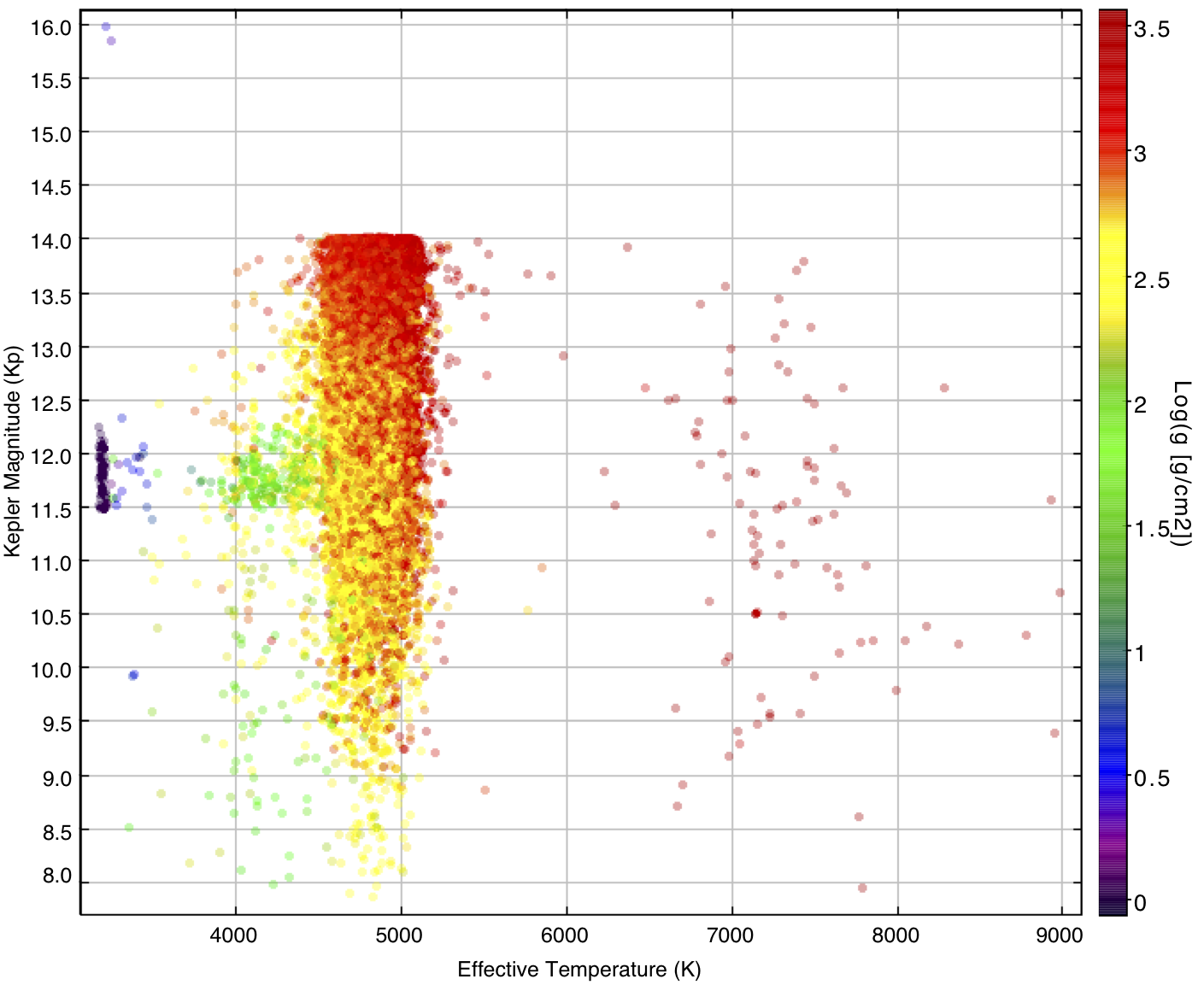|
|||||||||||||||||||
|
|
|||||||||||||||||||
|
|
Kepler Red Giant Data Release (9/27/11)
The Kepler Team have released 14,048 red giants for scientific exploitation by the community. All quarter 0 to quarter 8 light curves of these targets can now be downloaded by you and your collaborators. While there is no guarantee that a specific target in the red giant list has been observed over all past operational quarters, the maximum length of time series data now publicly available for red giant targets is 680 days. These targets remain on the Kepler target list and will continue to be observed when pixels are available. All future data collected for these targets will be delivered to the archive without proprietary periods. They do, however, have a low priority for the core mission exoplanet survey and are among the first targets to be dropped from the survey each quarter if pixel resources become stretched. It behooves the community to identify the red giants of highest value from this public sample over the next 12 months and reinstate them to the target list through the 2013 Guest Observer program (cycle 5).
The Kepler red giant sample will also be surveyed by the SDSS III APOGEE experiment providing a yield of red giants within the Galactic bulge, bar, disk, and halo. The precise radial velocities and detailed chemical abundance "fingerprinting" provide by APOGEE, combined with Kepler asteroseismology, will yield unprecedented insights into stellar physics and the dynamical structure and chemical history of the Galaxy.
The red giant branch stars were selected from all targets observed during Q1-Q3 with a KIC classification and a predicted oscillation peak frequency less than 320 micro-Hz (cut is based on the long cadence Nyquist frequency). The list was then trimmed to include only red giant stars by performing cuts in Teff and log(g) according to Ciardi et al. 2011 (AJ, 141, 108). This resulted in 15,626 targets that do not have a known planetary candidate. Not all targets are observed each quarter, reducing the number of data released in Q4-Q8. The magnitude range of red giants in the released sample is dominated by 7.9 < Kp < 14.0. The KIC-derived stellar effective temperatures are dominated by the range 4,500 < Teff (K) < 5,100. KIC-derived surface gravities mostly occur within the range 2.4 < log(g) (cgs) < 3.4. See the Figure below for the distribution of these red giants in Kepler magnitude, log(g) and Teff.
All newly released data from this sample can be inspected and
downloaded from the Kepler Data Search Interface at MAST,
by setting the condition flag to "Red Giant".
Alternatively, there are wget scripts available to download these data at
http://archive.stsci.edu/pub/kepler/lightcurves/tarfiles/wget_scripts.
There are also tarfiles that contain these data. The tarfiles containing public data for
Quarters 4-8 have been either updated or created and can be found
at http://archive.stsci.edu/pub/kepler/lightcurves/tarfiles/.
|
|
|




 Follow Us
Follow Us
